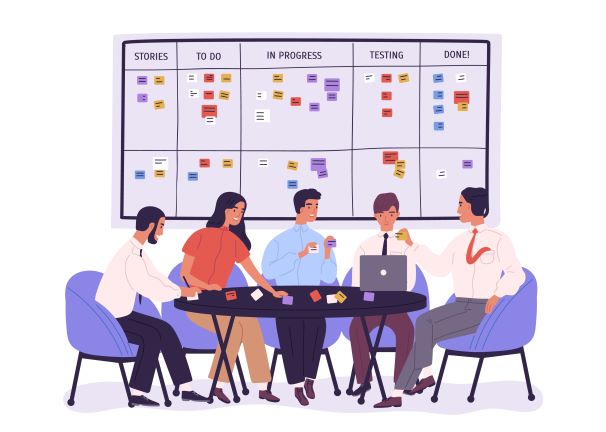

Concept mapping includes multiple steps, shown below:
Engage your key stakeholders
This method involves collecting data related to stakeholders’ experiences and preferences (Moodie et al., 2011). Stakeholders are engaged in the process of identifying implementation barriers and strategies to address them.
Including stakeholders in the process right from the “get-go” positively impacts implementation and clinical outcomes because:
- Stakeholders can identify specific practice contexts and barriers within their daily work (Gagliardi et al., 2016); they will likely identify unforeseen problems and predict their outcomes because they know the ins and outs of their work setting.
- Stakeholders are the intended knowledge users; when their experiences and opinions are integrated into decision-making processes, the selected implementation intervention strategies may be more important to knowledge users and more feasible in their work setting (Gagliardi et al., 2016; Moodie et al., 2011).
In concept mapping, stakeholders participate in brainstorming, sorting, and rating activities to reach a consensus on the best strategies to improve implementation (Kane & Trochim, 2002; Powell et al., 2017). Concept mapping can help you work with your stakeholders to identify your strategies:
Brainstorming

- Invite stakeholders to a brainstorming session with you and your team about ways to promote uptake of the practice change. You can do individual or group sessions.
- During the session, ask stakeholders to identify any barriers and how these barriers may be addressed.
- Ask stakeholders questions about what the best ways are to implement the innovation as it pertains to:
a. The micro (individual), meso (organizational), and macro (system) level factors.
b. The barriers to uptake at each level.
4. Ask stakeholders to suggest strategies for each barrier and at each level.
5. Generate a list of strategies – these are likely discrete statements that capture the essence of each idea.
6. Give yourself some time – are there questions you’d like to follow up on? Carefully review the list of strategies in preparation for the sorting session at another time.
Tip: If your stakeholders are not available for another meeting, you might need to immediately launch into the sorting session after brainstorming.
Sorting

- Instruct stakeholders to sort the strategy statements into categories that make sense to them and generate a label for each category they created. IMPORTANT: Ask them to stay away from creating a miscellaneous category, or labelling categories by importance or by feasibility (you will get to this in the following steps).
- Review the categories. Keep an eye out for too many categories; there should be no more than 20. If there are, revisit these categories and try to group them together. More than 20 categories make the sorting task difficult for you and your stakeholders. Once you are happy with the number of categories and there is agreement on what they represent, you can proceed to the rating session.
Rating

- Ask your stakeholders to rate the importance of each strategy statement on a scale ranging from 0 (not important at all) to 5 (extremely important) based on the impact each strategy would have on the implementation of the innovation.
- Ask your stakeholders to rate each strategy statement on its feasibility using the scale of 0 (not feasible at all) to 5 (extremely feasible). Ask them to consider the feasibility of implementing the strategies within their practice environments. If your stakeholders include policymakers and researchers, ask these individuals to consider the feasibility of these strategies from their administrative/research perspectives.
Summarizing
Once you completed the concept mapping exercise with your stakeholders, it is time to identify strategies within each category that all or most stakeholders rated as both feasible and important. Next, identify those that received high ratings for either feasibility or importance (> 4 points) from all stakeholder groups. Finally, review the barriers that match each strategy to ensure that the strategy addresses each barrier.

Accelerate Your Success: Engaging stakeholders is a useful way to select which implementation strategies would work for your setting. Consider forming a network of stakeholders that you and your team can turn to for more information and advice on implementing the practice change in your setting. Check out the Social Movement Action Framework’s ‘Networks of change agents and resources’ to learn more about how you can leverage networks when selecting and tailoring strategies.
